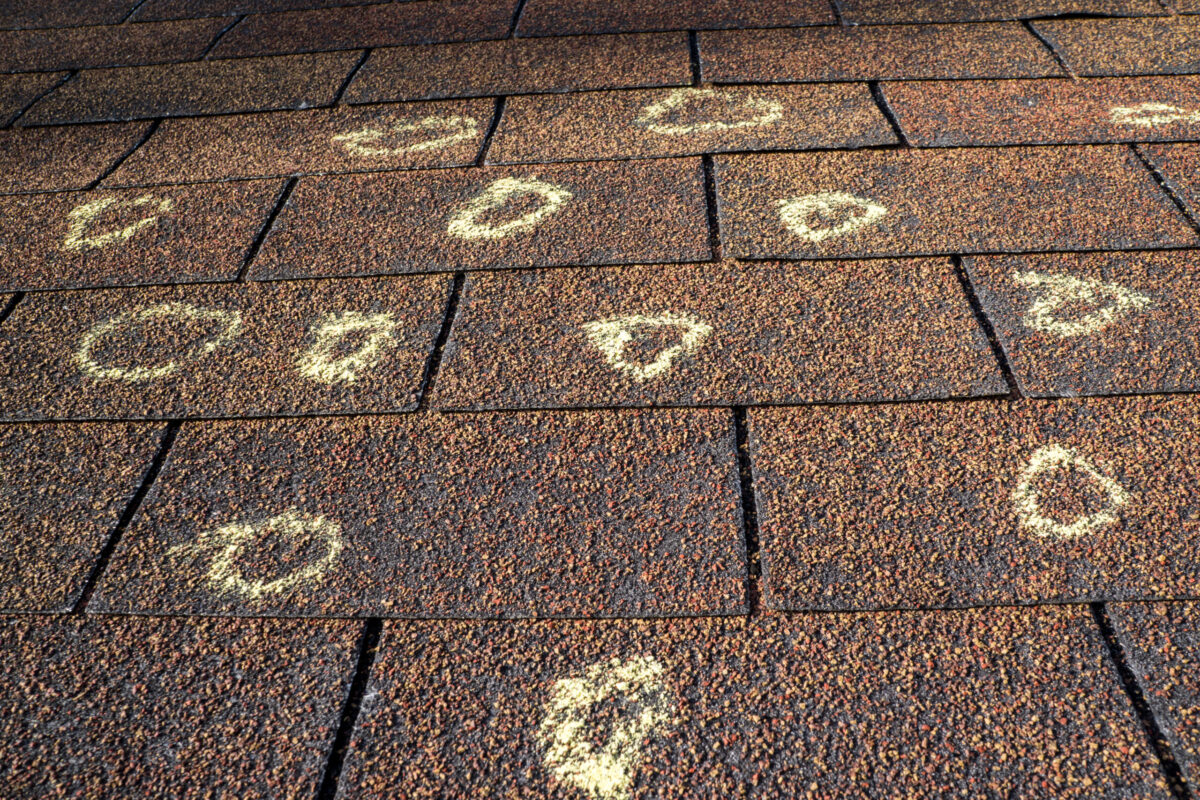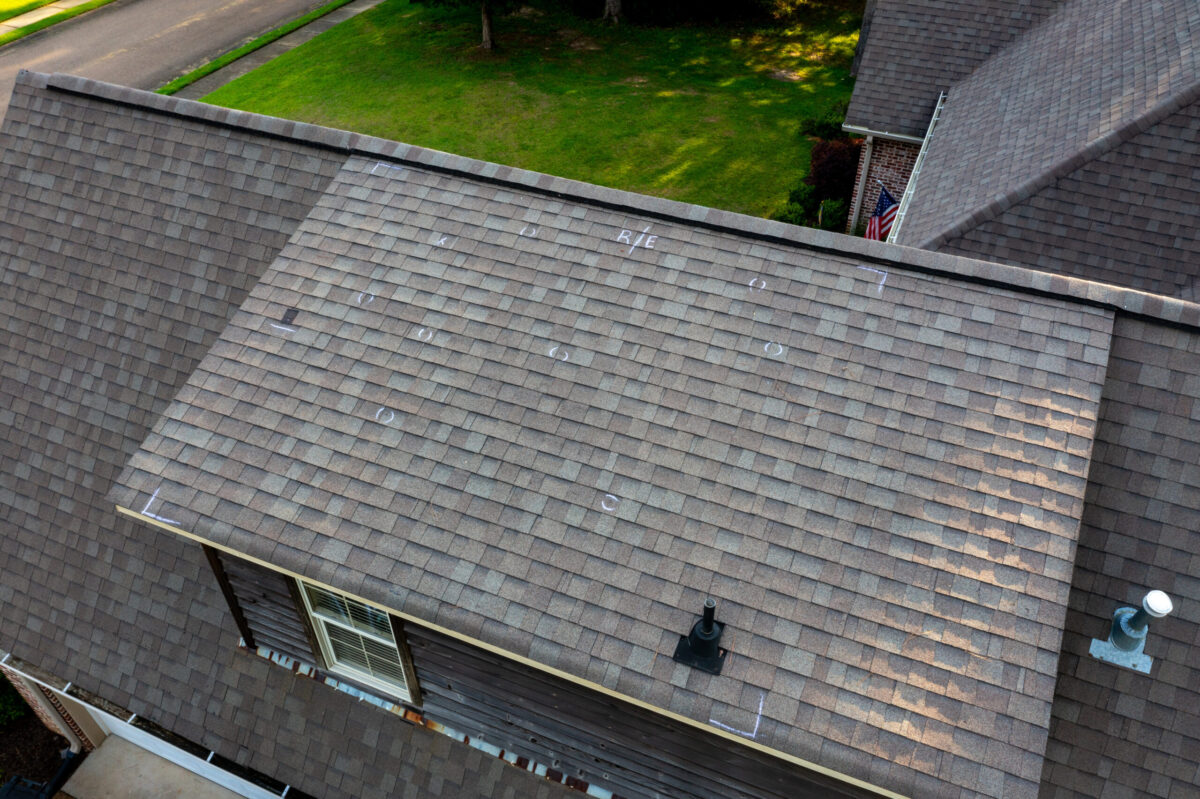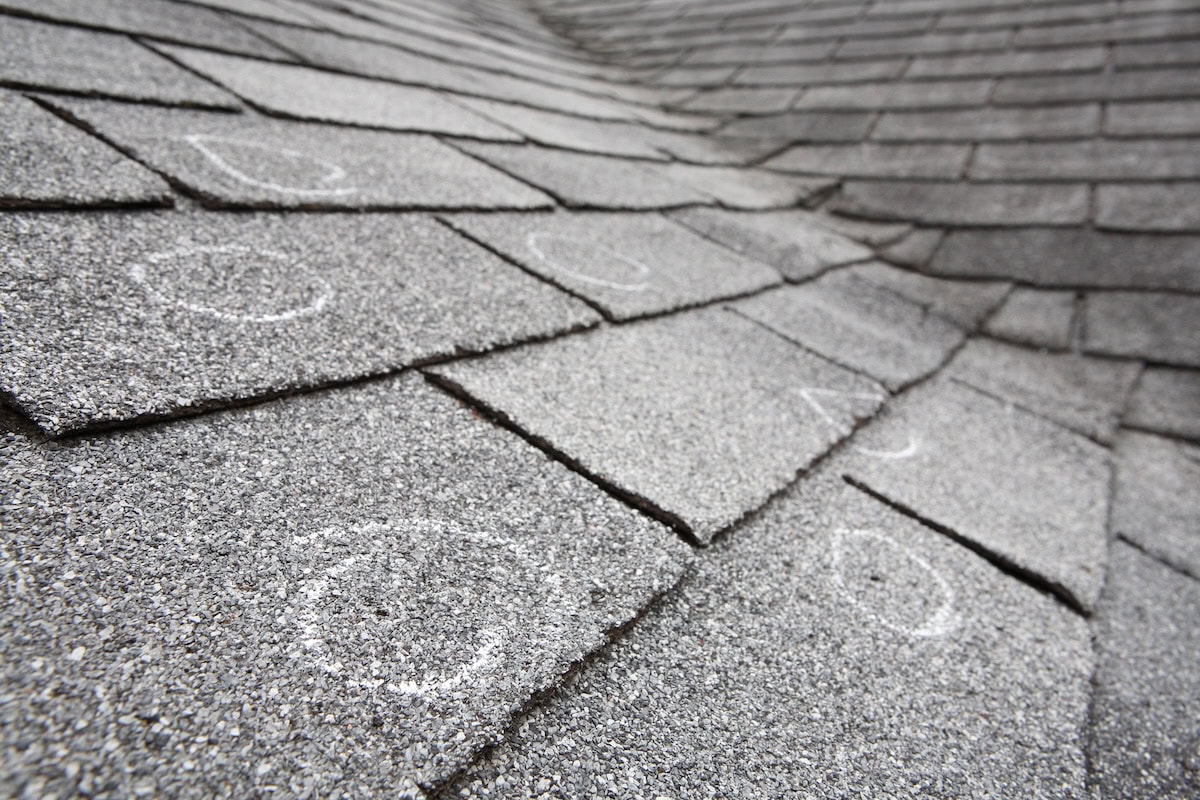When severe weather strikes your home, the aftermath can feel overwhelming. Hail damage roof repair requires immediate attention to prevent costly long-term issues like water damage, mold growth, and structural problems.
After a hailstorm, your roof becomes your home’s first line of defense against the elements. Acting quickly and following the right steps can save you thousands in repair costs and protect your family’s safety.
This comprehensive guide will cover:
- Why immediate action is crucial after hail damage
- The 7 essential steps for tackling storm damage repair
- How to work effectively with insurance companies and contractors
- Warning signs that indicate you need professional help
🚨 Why Hail Damage Roof Repair Is Critical

Hail damage might seem minor from ground level, but even small dents can compromise your roof’s integrity. The impact creates weak points that allow water to penetrate your home’s protective barrier.
Delaying repairs after hail damage can lead to serious consequences:
- Water infiltration: When water seeps through your roof, it can cause significant damage to your home’s interior. Walls, ceilings, and even your personal belongings can become waterlogged, leading to costly repairs and potential replacement of damaged items.
- Mold and mildew growth: Damp areas caused by roof leaks are the perfect breeding ground for mold and mildew. These fungi not only damage surfaces but also pose serious health risks, such as respiratory issues and allergies, for your family.
- Structural deterioration: Moisture from a damaged roof can weaken essential parts of your home, such as wood framing and support beams. Over time, this can lead to serious structural issues, compromising the stability and safety of your home.
- Higher repair costs: A small leak or minor damage, if left unaddressed, can quickly escalate into a widespread issue. The longer the problem persists, the more expensive and extensive the repairs become, adding unnecessary strain to your budget.
- Insurance complications: Many insurance policies require you to report storm or water damage promptly. Failing to address and report the damage in a timely manner could result in claim denials, leaving you to cover repair costs entirely on your own.
The sooner you address hail damage, the better your chances of preventing these cascading problems. Most insurance companies expect homeowners to act within a reasonable timeframe after discovering damage.
🔧 7 Steps to Tackle Roof Storm Damage

Taking systematic action after hail damage helps ensure nothing gets overlooked. These steps guide you through the process from initial assessment to final repairs.
1. Prioritize Safety and Document Initial Damage
Never attempt to climb on your roof immediately after a storm. Instead, conduct a preliminary assessment from the ground using binoculars or by taking photos from your upper-story windows.
- Look for obvious signs like missing shingles, dented gutters, or damaged flashing
- Document everything with clear, dated photographs for insurance purposes
2. Contact Your Insurance Company Immediately
Most insurance policies require prompt notification of storm damage. Call your insurance agent or company’s claims hotline as soon as possible after the storm.
- Report the date and time of the hail event
- Provide your initial damage assessment and photo documentation
3. Schedule a Professional Roof Inspection
While you can spot obvious damage from the ground, trained professionals can identify subtle issues that untrained eyes might miss. Professional storm damage specialists have the experience and tools to conduct thorough assessments safely.
- Choose licensed, insured contractors with storm damage experience
- Request detailed written estimates that break down all necessary repairs
4. Secure Temporary Protection if Needed
If your roof has holes or significant damage that exposes your home’s interior, take immediate steps to prevent water intrusion while waiting for permanent repairs.
- Use heavy-duty tarps to cover damaged areas securely
- Place buckets or containers to catch any leaking water indoors
5. Meet with Insurance Adjusters
Your insurance company will send an adjuster to assess the damage and determine coverage. Be present during this inspection to ensure all damage gets properly documented.
- Point out all areas of concern you’ve identified
- Provide your documentation and contractor estimates for comparison
6. Choose a Reputable Contractor
Select a contractor who specializes in storm damage repairs and has proper licensing and insurance. Avoid door-to-door solicitors who appear immediately after storms.
- Verify licenses and insurance coverage before signing contracts
- Read reviews and check references from recent storm damage projects
7. Monitor the Repair Process Closely
Stay involved throughout the repair process to ensure work meets your expectations and insurance requirements. Quality contractors welcome your questions and provide regular updates.
- Request progress photos if you can’t be present during work
- Conduct a final walkthrough before making final payment
⚖️ Working Successfully With Insurance and Contractors

Understanding how insurance claims work and choosing the right contractor can make the difference between a smooth repair process and months of frustration. Knowledge of these relationships helps you navigate the system effectively.
Understanding Your Insurance Coverage
Most homeowners’ policies cover hail damage under dwelling protection, but coverage details vary significantly between policies. Review your policy documents or contact your agent to understand your specific coverage limits and deductibles.
Key coverage areas to understand:
- Dwelling coverage: Repairs to your home’s structure and attached fixtures
- Replacement cost vs. actual cash value: How your policy calculates claim payments
- Deductible amounts: Your out-of-pocket expense before insurance coverage begins
Selecting Storm Damage Specialists
Not all roofing contractors have experience handling insurance claims and storm damage repairs. Choose professionals who understand the complexities of working with insurance companies and can advocate for complete repairs.
Essential contractor qualifications:
- Proper licensing: Verify current general contractor licenses in your state
- Comprehensive insurance: Confirm liability and workers’ compensation coverage
- Storm damage expertise: Look for contractors who specialize in insurance restoration work
- Local reputation: Check online reviews and Better Business Bureau ratings
🏠 Ready to Restore Your Roof’s Protection
Hail damage doesn’t have to become a long-term problem for your home. Taking swift, systematic action protects your investment and ensures your family’s safety. Remember that professional assessment and quality repairs are investments in your home’s future.
Don’t let storm damage compromise your home’s protection any longer. Contact K&D Roofing today for a comprehensive free roof inspection and let our experienced team guide you through the repair process from start to finish.

